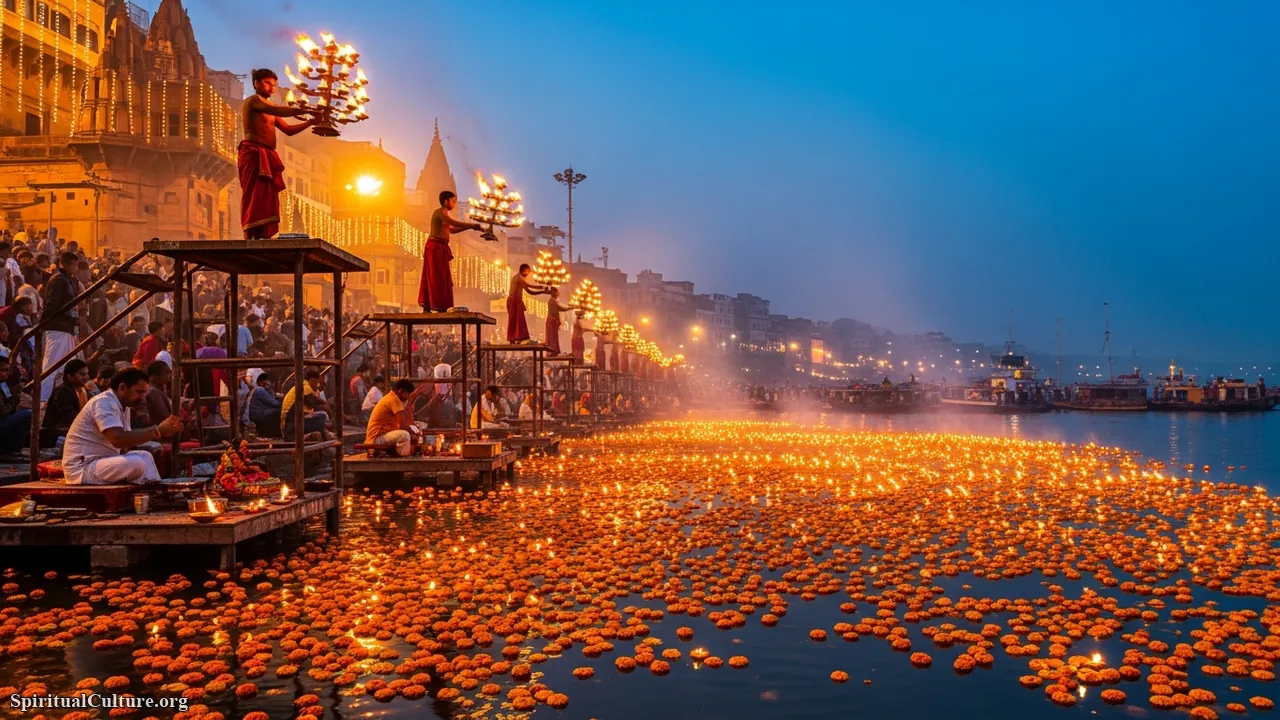The United Arab Emirates (UAE) is globally recognized as a nexus of modernity and tradition, where towering skyscrapers stand in dialogue with deep-rooted cultural values. However, to truly understand the nation’s spirit—its resilience, unity, and profound connection to the desert landscape—one must look beyond the contemporary glamour and focus on its foundational cultural symbols.
These symbols are not mere relics of the past; they are living testaments to the Emirati identity, having been preserved and celebrated in national life, art, and even modern architecture. From the majestic birds of prey that once ensured survival to the simple, resilient tree, each element carries an intrinsic spiritual weight that speaks to the patience, hospitality, and pride of the people.
At Spiritual Culture, we rank these symbols based on their demonstrable cultural pervasiveness, historical significance to the Bedouin way of life, and their enduring spiritual impact on the national narrative. This list is a journey into the heart of the UAE, explaining the deeper meaning and heritage behind its most recognized cultural icons, all supported by data current to the Current Time of Writing.
Table of the Top 10 Most Recognized Cultural Symbols in the UAE
| Rank | Symbol | Primary Significance | Cultural Pervasiveness (Current) | Spiritual Value (Core Trait) |
|---|---|---|---|---|
| 1 | The Falcon (Al Saqr) | National Emblem, Strength & Heritage | UNESCO Intangible Cultural Heritage; Featured on national emblem, currency, and as a national sport (Falconry). | Nobility, Vigilance, Trust, Patience. |
| 2 | The UAE National Flag | Sovereignty and Unity | Displayed ubiquitously across all seven emirates; central to National Day celebrations. | Unity, Peace (White), Sacrifice (Red), Hope (Green), Dignity (Black). |
| 3 | Dates and Date Palm (Al Nakhlah) | Sustenance, Life, and Prosperity | Staple of traditional hospitality (Gahwa), a primary crop, and symbol of desert resilience. | Sustenance, Abundance, Deep-rootedness. |
| 4 | Arabic Coffee Pot (Dallah) & Gahwa | Hospitality and Generosity | Essential ritual in Emirati social gatherings and formal/business settings; featured on the 1 Dirham coin. | Welcome, Honouring the Guest, Social Cohesion. |
| 5 | The Ghaf Tree (Prosopis cineraria) | Resilience and Environmental Heritage | National Tree; protected by federal law; a symbol of the Year of Tolerance. | Resilience, Endurance, Shelter, Connection to the land. |
| 6 | The Arabian Oryx (Al Maha) | Conservation and National Pride | National animal; successful conservation story; featured on the 50 Dirham note. | Purity, Dignity, Resilience (Survival in the desert). |
| 7 | Traditional Attire (Kandura & Abaya) | Modesty, Identity, and Respect | Worn daily by Emirati nationals; signifies cultural adherence and religious values. | Modesty, Cultural Pride, Respect for Islamic values. |
| 8 | The Dhow (Traditional Boat) | Maritime Heritage and Trade | Symbol of pre-oil economy (pearling, fishing); seen on older emblems and currency; preserved in traditional festivals. | Adventure, Resourcefulness, Connection to the Sea. |
| 9 | Sheikh Zayed Grand Mosque | Modern Islamic Architecture & Tolerance | Foremost modern cultural and religious landmark; a global hub for interfaith visitors. | Piety, Architectural Grandeur, Tolerance (open to all faiths). |
| 10 | Nabati Poetry | Oral Heritage and Literary Expression | Traditional Bedouin vernacular poetry; remains popular in official and social circles; a link to ancestral wisdom. | Wisdom, Emotional Expression, Preservation of History. |
Top 10. Nabati Poetry
Nabati poetry, or “the poetry of the people,” serves as the historical record and emotional outlet for the Bedouin tribes. Unlike classical Arabic poetry, Nabati uses the local vernacular, making it intimately accessible and profoundly influential on daily life. As of the Current Time of Writing, it remains a celebrated oral tradition, ensuring the language of the desert and its associated moral lessons are passed down through generations.
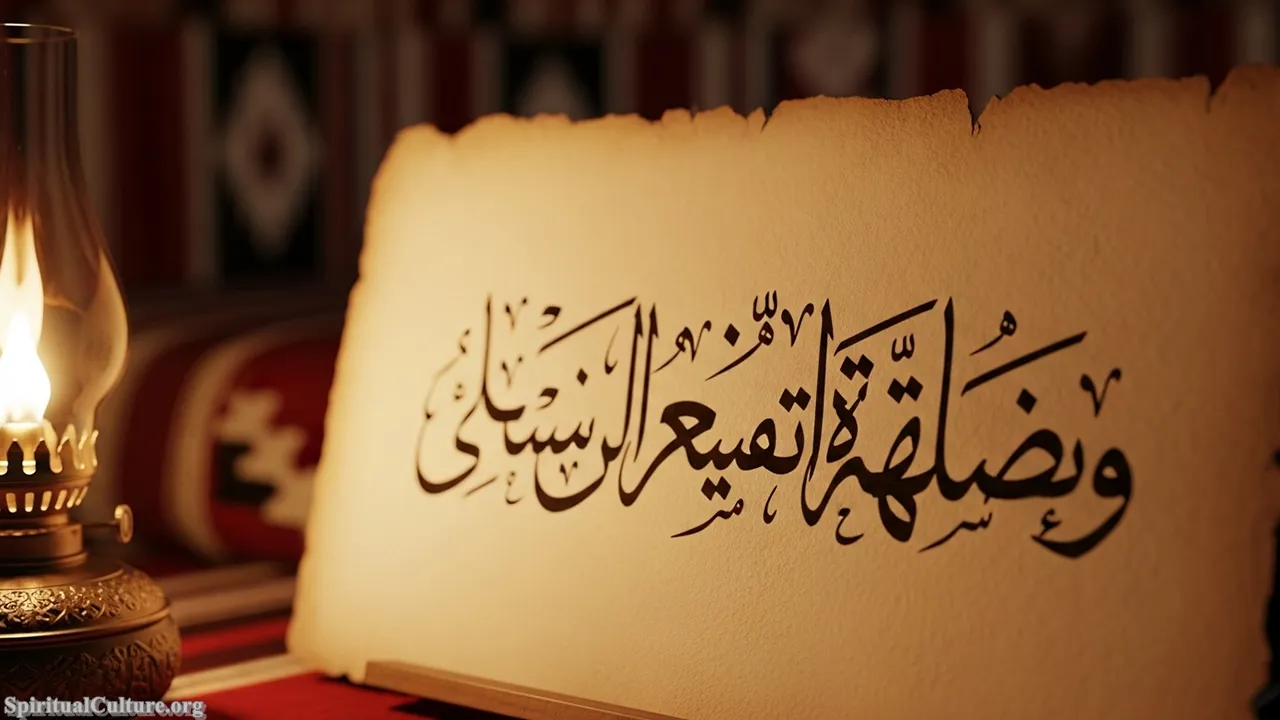
This oral tradition ranks on our list not just for its beauty but for its role as a spiritual and cultural anchor. It is the repository of ancestral wisdom, often recounting stories of honour, patience in the face of the harsh desert, and devotion to Islamic faith and community. The poet (Sha’er) acts as a moral guide and historian, weaving spiritual concepts into everyday events, thus upholding the community’s ethical framework.
The preservation of Nabati poetry represents the UAE’s commitment to protecting its non-physical heritage. It teaches us that true cultural wealth lies not only in monuments but also in the spoken word and the shared memory of a people, reflecting the deep, humanistic value placed on introspection and lyrical expression.
Cultural/Spiritual Highlights
- Primary cultural link to pre-Islamic and Bedouin heritage.
- A key source for understanding traditional Emirati ethics and morals.
- Often used in modern contexts to celebrate national events and unity.
Top 9. Sheikh Zayed Grand Mosque
Opened in 2007, the Sheikh Zayed Grand Mosque in Abu Dhabi is a monumental cultural achievement and a symbol of the nation’s vision for the future. While modern, its sheer scale, use of traditional Islamic design elements—such as the world’s largest hand-knotted carpet and 82 domes—and its status as a pilgrimage site for all visitors grant it a recognized cultural rank. It is a vital centre for Islamic learning and a global icon of contemporary Emirati identity.
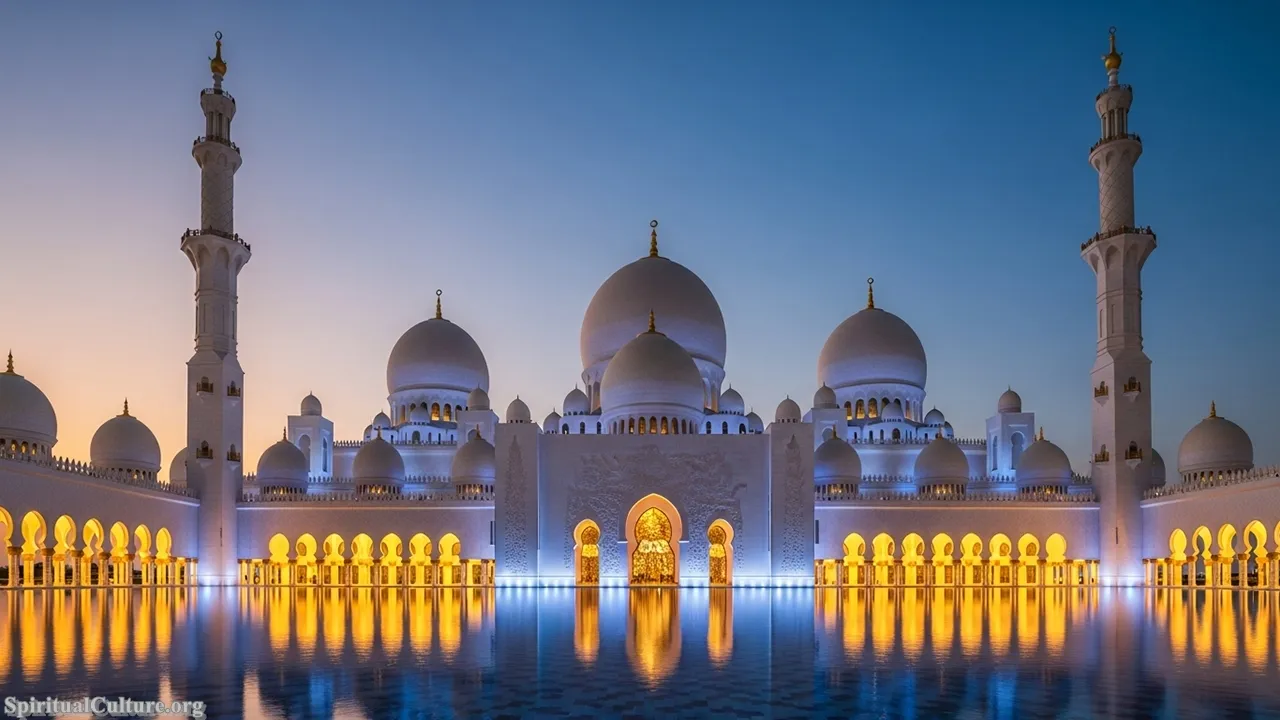
The mosque’s spiritual impact is two-fold: it is a place of profound Muslim worship and a designated sanctuary of peace and tolerance for people of all faiths. It embodies the late Founding Father’s vision of respectful cross-cultural dialogue, demonstrating that spiritual grandeur and openness can coexist. This makes it a crucial spiritual landmark that anchors the nation’s reputation for tolerance and global citizenship.
The mosque stands as a powerful moral lesson carved in marble: that peace is attained through understanding, and spiritual devotion can be an act of shared human celebration. Its openness reflects a core preservation value—preserving not just religious practice, but the practice of universal welcoming hospitality, central to the Emirati soul.
Cultural/Spiritual Highlights
- A physical embodiment of the late Sheikh Zayed’s vision of peace and tolerance.
- Combines Mamluk, Ottoman, and Fatimid architectural styles, reflecting pan-Islamic unity.
- Hosts one of the world’s most significant annual Ramadan Iftar gatherings.
Top 8. The Dhow (Traditional Boat)
The Dhow, with its distinctive triangular lateen sail, is a direct link to the UAE’s maritime roots, dating back centuries. Before the discovery of oil, life in the coastal emirates was inextricably tied to the sea, where Dhows were essential for fishing, pearling, and long-distance trade. Though mechanized vessels dominate today, the Dhow remains a powerful, instantly recognized symbol, celebrated in historical districts and annual boat races.
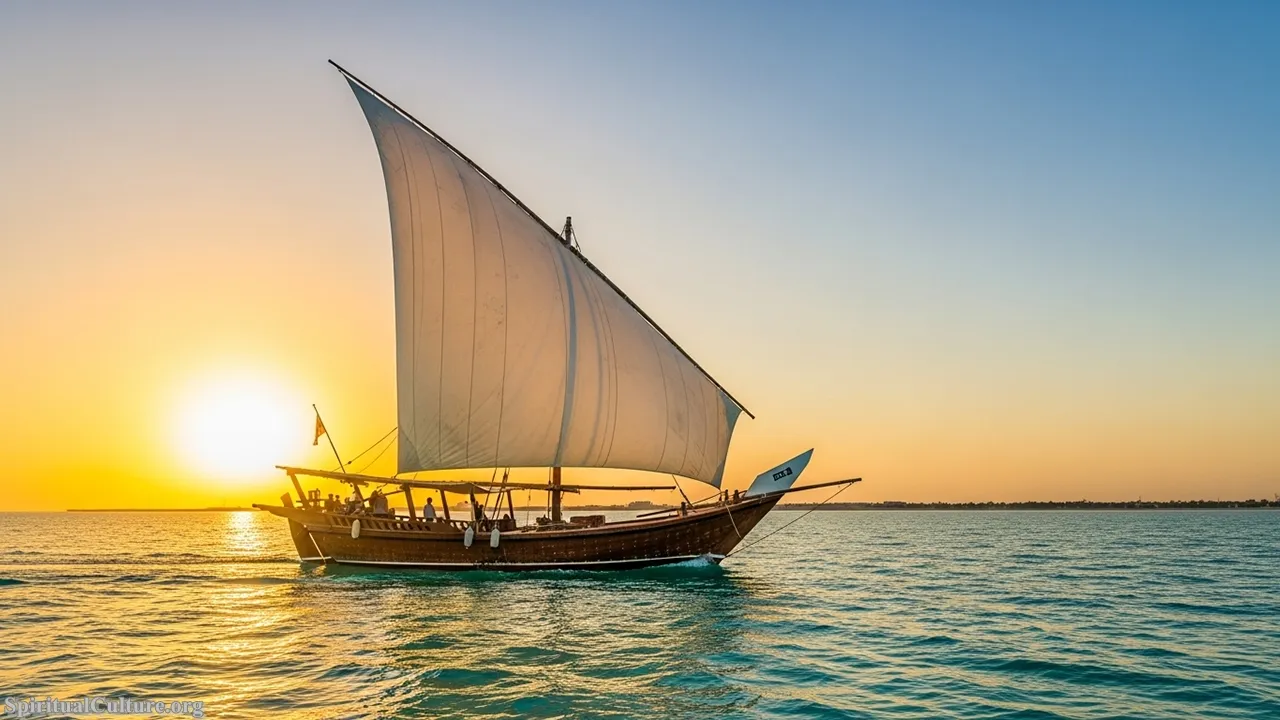
The Dhow’s presence on this list reflects the spiritual impact of the sea on the Emirati psyche: resilience, resourcefulness, and collective effort. A successful pearling journey required profound faith, immense patience, and the unity of the crew, mirroring the collective spirit needed for nation-building. It symbolizes the historical transition from the harsh realities of maritime survival to the prosperity of today, a journey powered by the spirit of adventure.
Preserving the Dhow’s legacy is an act of preserving the economic and spiritual genesis of the coastal communities. It reminds the nation that its foundational wealth was earned through the hard work of its people and their intimate, trusting relationship with the natural, often unforgiving, elements of the Gulf.
Cultural/Spiritual Highlights
- Represents the historical foundation of pearling and trade.
- Symbolizes resourcefulness, teamwork, and reliance on faith.
- Preserved in the UAE’s maritime museums and heritage festivals.
Top 7. Traditional Attire (Kandura & Abaya)
The Kandura (for men) and Abaya (for women) are more than clothing; they are a visible, daily expression of cultural identity and adherence to Islamic principles of modesty. Designed specifically for the high desert temperatures, the flowing white Kandura and the black Abaya embody practicality and elegance. In the Current Time of Writing, this attire is the universal uniform of Emirati nationals, instantly signaling cultural pride and belonging.

The spiritual value of the traditional dress lies in its commitment to haya (modesty) and ihtiram (respect). By providing a visual sense of cultural continuity, the garments reinforce the nation’s dedication to its Islamic heritage amidst rapid modernization. The simple yet dignified style emphasizes the value of character over ostentation, a quiet form of spiritual anchoring in a fast-paced world.
The choice to universally wear traditional dress in modern life is a powerful, non-verbal statement of preservation. It teaches that one can embrace global progress while maintaining a distinct, time-honoured cultural framework, upholding the moral lesson that true dignity comes from respecting one’s heritage and religious values.
Cultural/Spiritual Highlights
- A visible, daily embodiment of Islamic principles of modesty.
- The White Kandura symbolizes purity and suitability for the environment.
- Unifies the identity of Emirati citizens across the seven emirates.
Top 6. The Arabian Oryx (Al Maha)
The Arabian Oryx, known locally as Al Maha, is the national animal of the UAE and a remarkable symbol of successful conservation. Once declared extinct in the wild, its reintroduction through dedicated efforts by the UAE and other Gulf states makes it a globally recognized icon. This elegant, white antelope is prominently featured on the 50 Dirham note and is celebrated across national parks and reserves.

The Oryx’s spiritual and cultural importance stems from its purity of colour and its seemingly impossible resilience in the most arid climates. It embodies the spiritual trait of perseverance and the nation’s pride in its ability to not only survive but thrive. Culturally, it signifies the UAE’s deep commitment to its natural heritage, illustrating that wisdom includes protecting the delicate balance of the desert ecosystem.
The preservation story of the Arabian Oryx offers a potent moral lesson about stewardship and hope. It demonstrates that with dedicated effort and collective will—qualities that built the UAE—lost connections to heritage can be restored, ensuring that natural dignity remains a core component of the national spirit.
Cultural/Spiritual Highlights
- Symbol of successful conservation and environmental stewardship.
- Embodies purity, dignity, and resilience in the face of scarcity.
- Features prominently on the 50 Dirham banknote, symbolizing national value.
Top 5. The Ghaf Tree (Prosopis cineraria)
The Ghaf Tree holds a unique cultural status as the national tree of the UAE, surviving in the harsh desert by drawing water from deep underground. Its sheer resilience has made it a powerful cultural icon, so much so that federal law strictly prohibits its uprooting. In a major recognition of its spiritual context, it was chosen as the emblem for the national Year of Tolerance initiative, linking its deep roots to the deep roots of tolerance in Emirati society.

Its spiritual impact is profound: the Ghaf offers shade and sustenance where little else can survive, embodying the desert spirit of generosity, endurance, and provision. The late Sheikh Zayed often urged the preservation of the Ghaf, viewing it as a tangible symbol of life and hope. Its branches often served as a natural majlis (meeting place), fostering community dialogue and consensus—the very foundation of unity.
The Ghaf Tree is a living symbol that teaches the essential moral lesson of sustainability and giving. It serves as a reminder that the most significant strength is quiet and enduring, flourishing not despite the challenges, but through deep, unshakeable connection to the land and its history.
Cultural/Spiritual Highlights
- Designated as the National Tree and protected by federal law.
- Symbolized the Year of Tolerance, representing deep-rooted peace.
- Represents the desert traits of endurance, shelter, and community gathering.
Top 4. Arabic Coffee Pot (Dallah) & Gahwa
The Dallah, the traditional long-spouted Arabic coffee pot, and the cardamom-infused coffee (Gahwa) it serves, are perhaps the most vital symbols of Emirati hospitality. From the Bedouin tent to the most formal government offices, serving Gahwa is an essential, instantly recognizable cultural ritual. This practice transcends mere beverage consumption; it is an immediate gesture of welcoming the stranger and initiating dialogue.

The spiritual impact is entirely focused on the act of welcoming the guest, which is a core tenet of Arabian and Islamic ethics. The ceremony, involving precise pouring and acceptance etiquette, elevates hospitality to a sacred social contract. It emphasizes the values of generosity, humility, and the honouring of human connection, affirming that social cohesion is a spiritual duty. The Dallah’s feature on the 1 Dirham coin reinforces its status as a fundamental national value.
The ritual of the Dallah and Gahwa offers a profound moral lesson: in a harsh desert environment, the highest value is placed on human life and human connection. It teaches that regardless of one’s wealth or status, the door must always be open, and the commitment to generosity must be maintained, a preservation of the authentic Bedouin spirit.
Cultural/Spiritual Highlights
- The definitive symbol of Arabian hospitality and generosity.
- The ritual is governed by specific etiquette, emphasizing respect.
- A 1 Dirham coin feature, underscoring its national importance.
Top 3. Dates and Date Palm (Al Nakhlah)
The Date Palm (Al Nakhlah) is arguably the oldest cultural symbol of life in the Arabian Peninsula, providing not just the nutritious date fruit but also fronds for shelter, wood for construction, and fibre for ropes. The palm tree is a foundational pillar of the UAE’s historical economy and diet. Today, dates are the mandatory accompaniment to Gahwa, offered as the first and most sincere token of welcome and sustenance.
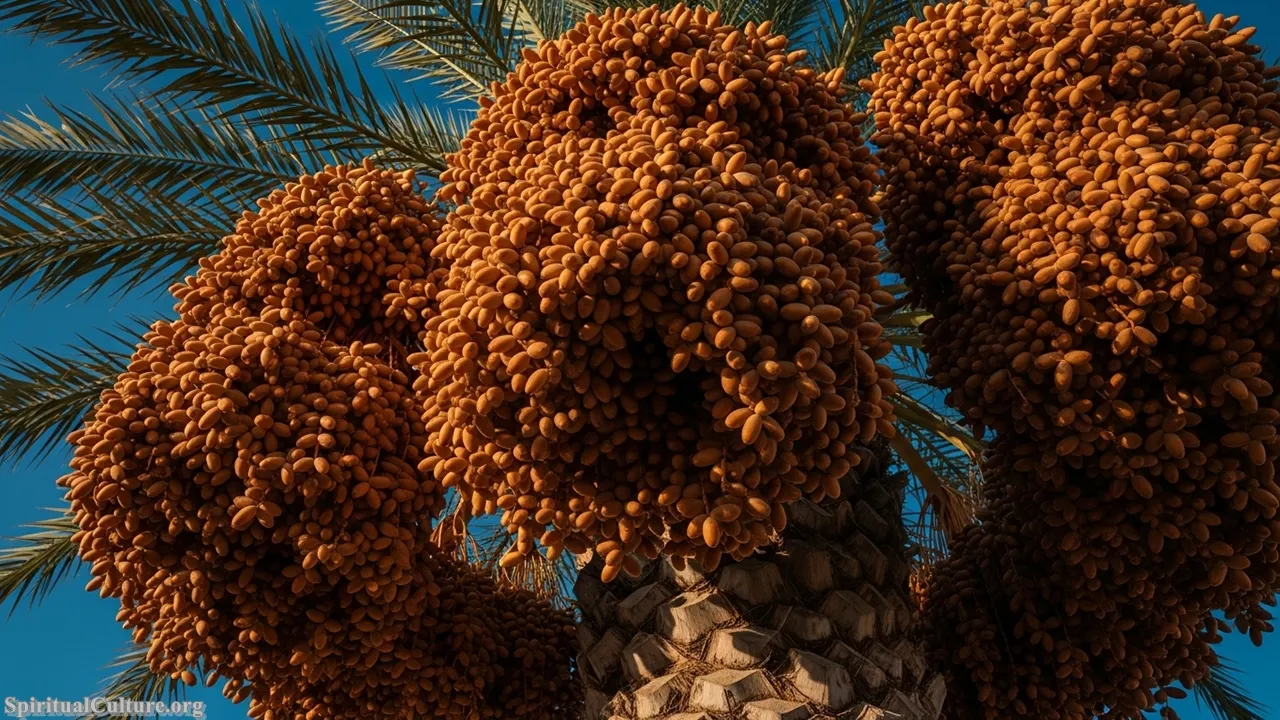
The Date Palm carries immense spiritual significance across the region and in Islam, often mentioned as a blessed and revered tree. It is the epitome of desert tenacity, producing life-giving fruit in the most severe conditions, symbolizing prosperity born from patience and deep-rootedness. Its very structure—a cluster of dates—reflects the importance of family and community cohesion, wherein mutual support ensures collective survival.
The continued cultivation of the date palm, even in an era of abundant food, is a cultural preservation act that teaches gratitude and respect for the natural world. It underscores the profound moral lesson that sustenance and strength come from simplicity and resilience, connecting the modern Emirati back to the resourcefulness of their ancestors.
Cultural/Spiritual Highlights
- Referred to as the “Queen of the Oasis,” central to desert life.
- Symbolizes prosperity, resilience, and the provision of sustenance.
- Mandatory offering as a gesture of hospitality and welcome.
Top 2. The UAE National Flag
The national flag, adopted upon the UAE’s formation in 1971, is the ultimate cultural symbol of unity, identity, and sovereignty across the seven emirates. Designed by the young Abdullah Mohammad Al Maainah, its four colours—red, green, white, and black—are derived from a poem by Safi Al Din Al Halawi about Arab unity. It is the most visible and universally recognized symbol of the modern nation, particularly prominent during National Day celebrations in December.
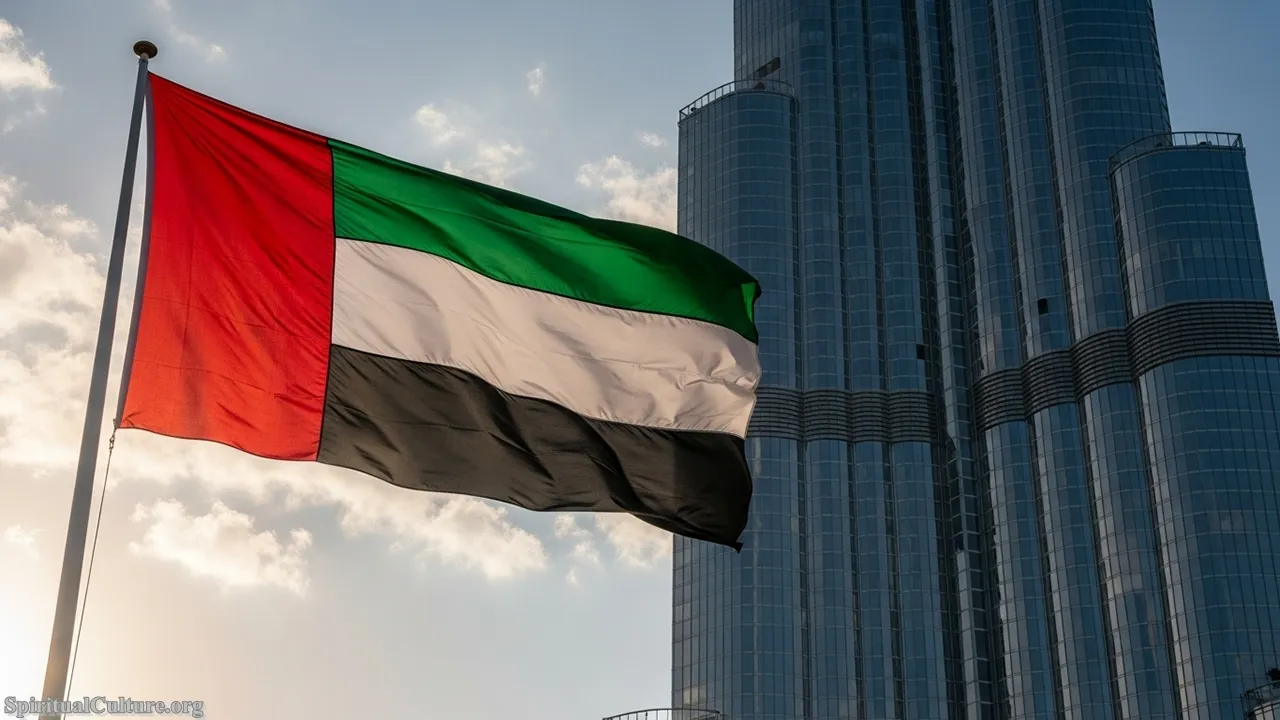
The spiritual and moral gravity of the flag is immense, as each colour represents a core value derived from Arab heritage: White for peace and charity, Green for hope and prosperity, Black for the strength of mind and dignity, and Red for courage and sacrifice. Its design is a statement of collective identity, transitioning from tribal affiliations to a unified federal state. It embodies the singular spiritual commitment of the founders to nation-building.
Waving the flag is an act of profound patriotism and a celebration of the peace and stability achieved through the federation. It is the singular symbol that transcends all local distinctions, offering the moral lesson that collective strength and shared vision—unity—is the highest national ideal.
Cultural/Spiritual Highlights
- Four colors symbolize core Arab values: Peace, Hope, Sacrifice, and Dignity.
- The ultimate symbol of the unification of the seven emirates in 1971.
- The focus of the annual National Day celebrations (December 2).
Top 1. The Falcon (Al Saqr)
The Falcon (Al Saqr) stands as the most recognized and spiritually significant cultural symbol of the UAE. It is the central element of the national emblem, featuring the golden falcon holding a disc with the flag and seven stars, and its image is ubiquitous on currency and government insignia. The tradition of falconry, a hunting practice stretching back over 2,000 years, is listed by UNESCO as an Intangible Cultural Heritage of Humanity, underscoring its global cultural weight.
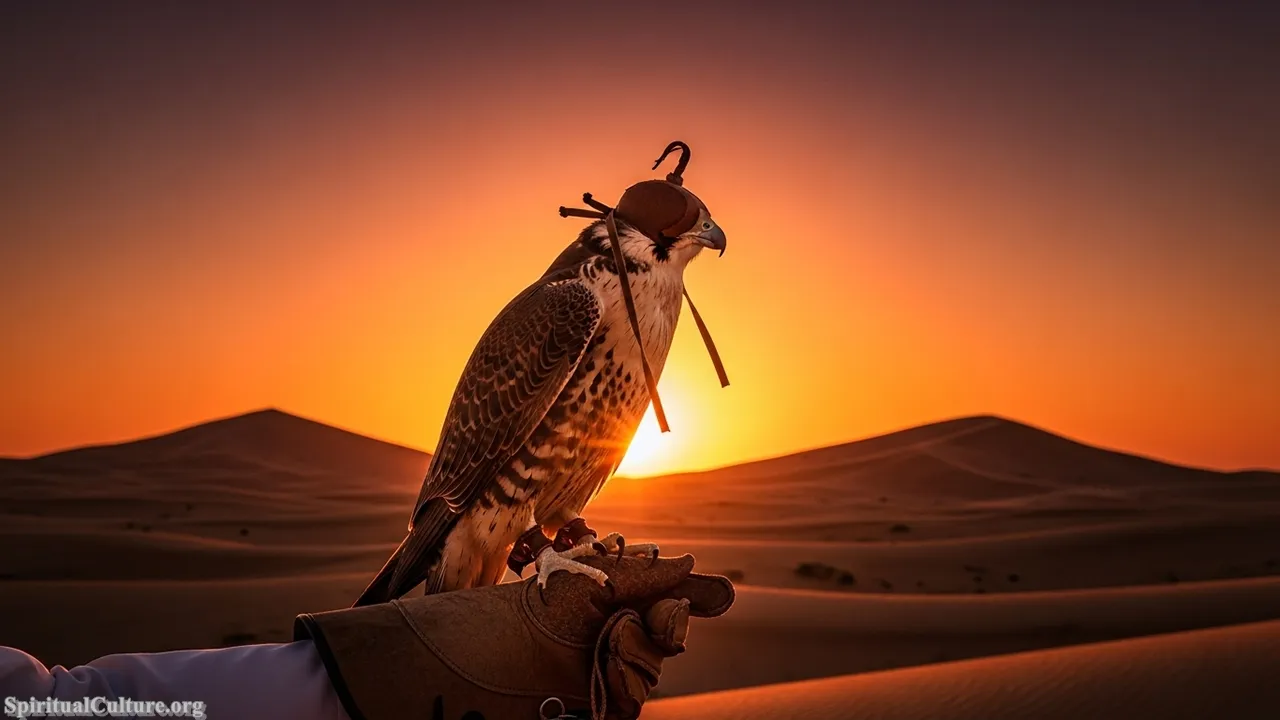
The reason for its premier ranking is its profound spiritual and cultural embeddedness. The falcon symbolizes traits central to the Emirati character: nobility, strength, vigilance, patience, and a deep sense of heritage. For the Bedouins, the falcon was a loyal partner in survival, a relationship built entirely on trust and mutual respect, which is a powerful spiritual metaphor for the human-nature bond. It is the literal embodiment of the founder, Sheikh Zayed’s, love for the desert and its traditions.
The falcon, therefore, offers the ultimate moral lesson of the Bedouin tradition: that true mastery is achieved not through domination, but through patient partnership and mutual respect. The preservation of falconry—through dedicated hospitals and conservation programs—is a spiritual commitment to upholding the honour and virtues that define the Emirati identity for Spiritual Culture.
Cultural/Spiritual Highlights
- Central feature of the UAE National Emblem since its 2008 redesign.
- Falconry is inscribed on the UNESCO Intangible Cultural Heritage List.
- Symbolizes Nobility, Strength, and the deep tradition of the Bedouin.
Conclusion
The cultural symbols of the UAE—from the soaring Falcon to the steadfast Ghaf Tree and the welcoming Dallah—weave a tapestry that eloquently tells the story of the nation’s journey. These symbols are not historical footnotes but active components of the modern national narrative, demonstrating how deeply the values of resilience, generosity, and unity are rooted in the Emirati soul. They remind us that true progress is achieved not by discarding the past, but by drawing strength and spiritual clarity from its deepest wells. At Spiritual Culture, we celebrate the UAE for its masterful ability to illuminate its spiritual heritage for the entire world.

